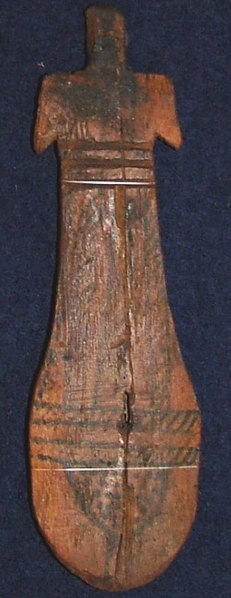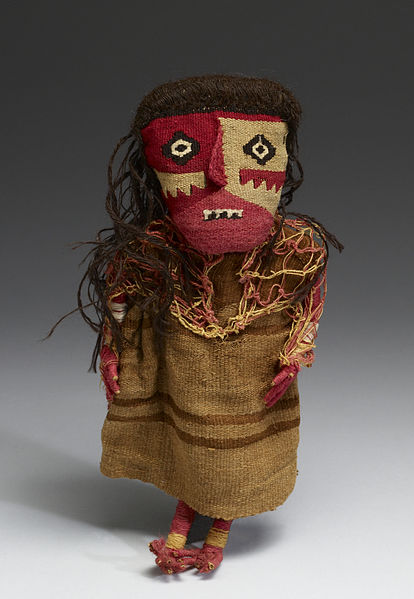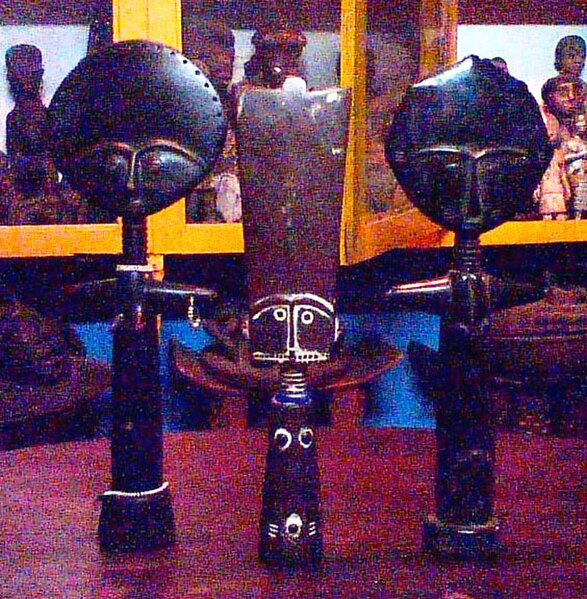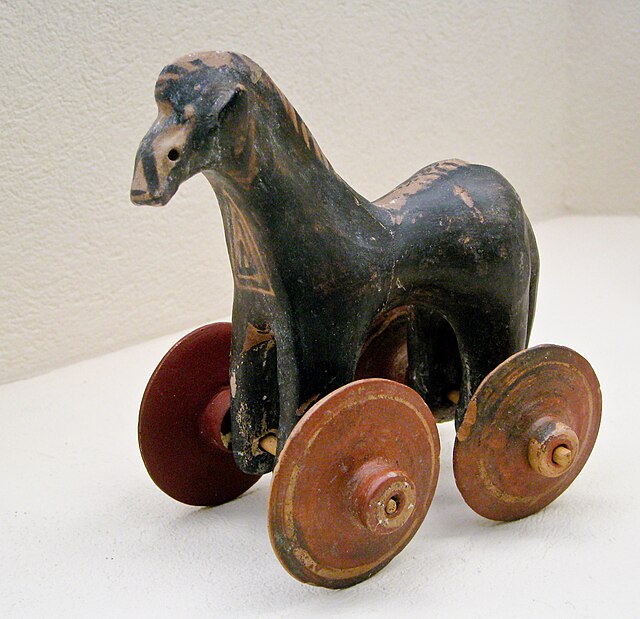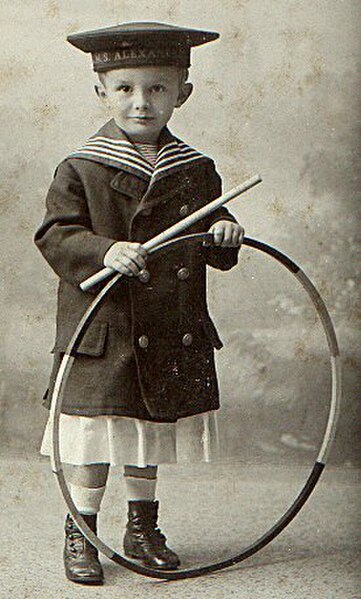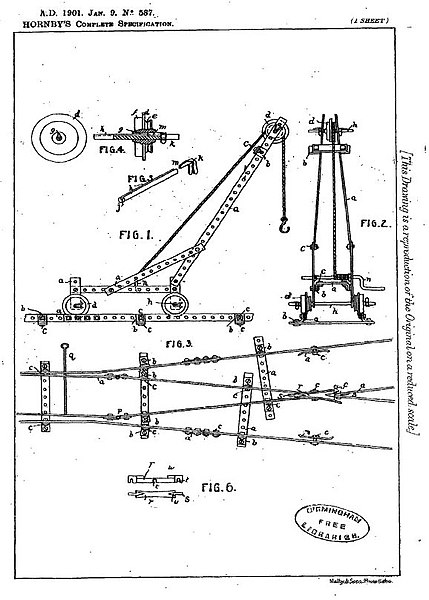A doll is a model typically of a human or humanoid character, often used as a toy for children. Dolls have also been used in traditional religious rituals throughout the world. Traditional dolls made of materials such as clay and wood are found in the Americas, Asia, Africa and Europe. The earliest documented dolls go back to the ancient civilizations of Egypt, Greece, and Rome. They have been made as crude, rudimentary playthings as well as elaborate art. Modern doll manufacturing has its roots in Germany, from the 15th century. With industrialization and new materials such as porcelain and plastic, dolls were increasingly mass-produced. During the 20th century, dolls became increasingly popular as collectibles.
European bisque doll from the 1870s
A typical Egyptian paddle doll from 2080 – 1990 BC
Textile doll (11th century), Chancay culture, found near Lima, Walters Art Museum. Of their small size, dolls are frequently found in ancient Peruvian tombs.
Traditional African akuaba dolls
A toy or plaything is an object that is used primarily to provide entertainment. Simple examples include toy blocks, board games, and dolls. Toys are often designed for use by children, although many are designed specifically for adults and pets. Toys can provide utilitarian benefits, including physical exercise, cultural awareness, or academic education. Additionally, utilitarian objects, especially those which are no longer needed for their original purpose, can be used as toys. Examples include children building a fort with empty cereal boxes and tissue paper spools, or a toddler playing with a broken TV remote control. The term "toy" can also be used to refer to utilitarian objects purchased for enjoyment rather than need, or for expensive necessities for which a large fraction of the cost represents its ability to provide enjoyment to the owner, such as luxury cars, high-end motorcycles, gaming computers, and flagship smartphones.
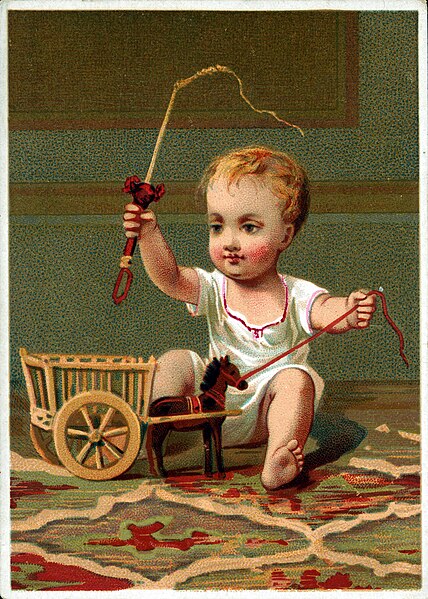
19th century illustration of a child playing with a toy horse and cart
Little horse on wheels, Ancient Greek children's toy. From a tomb dating 950–900 BCE, Kerameikos Archaeological Museum, Athens
A boy with a hoop. Hoops have long been a popular toy across a variety of cultures.
Frank Hornby's 1901 patent number GB190100587A for what later became known as Meccano


